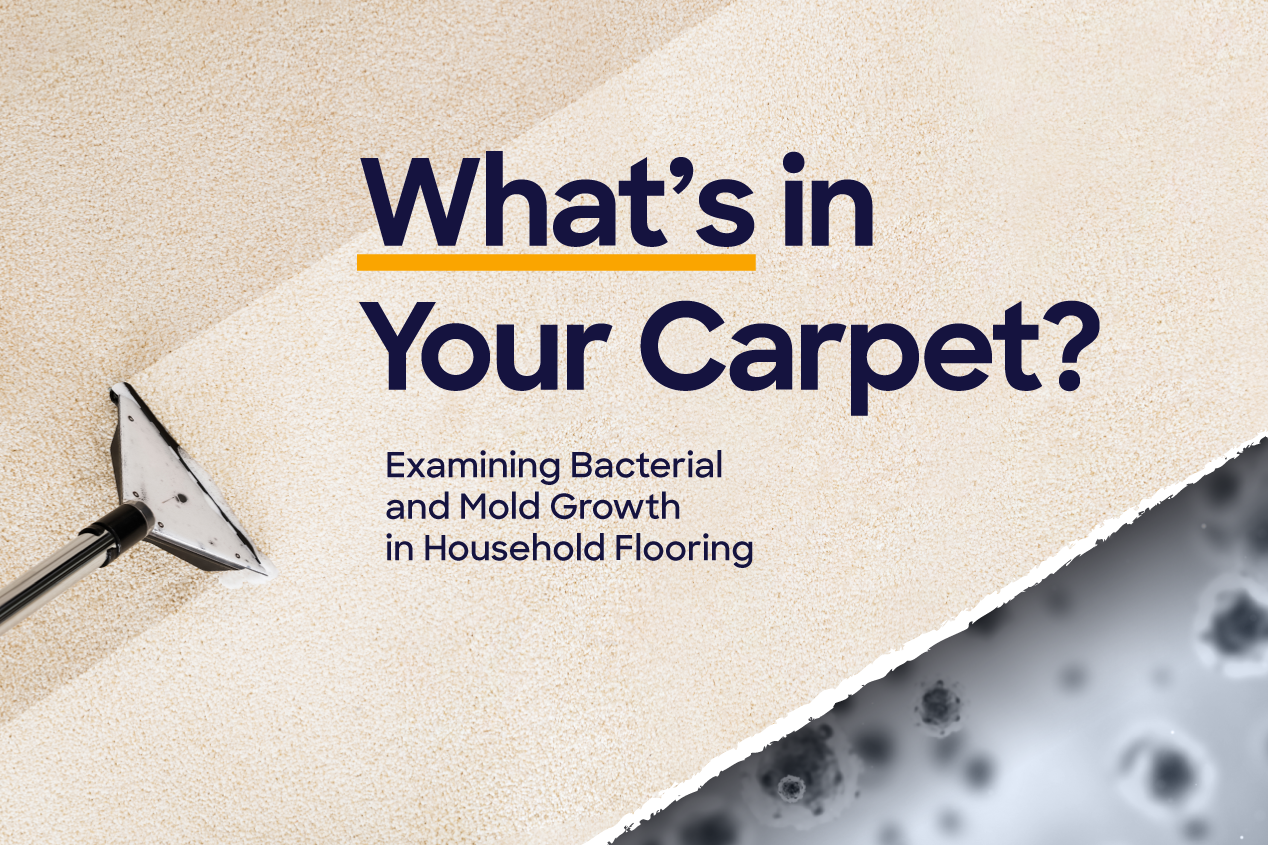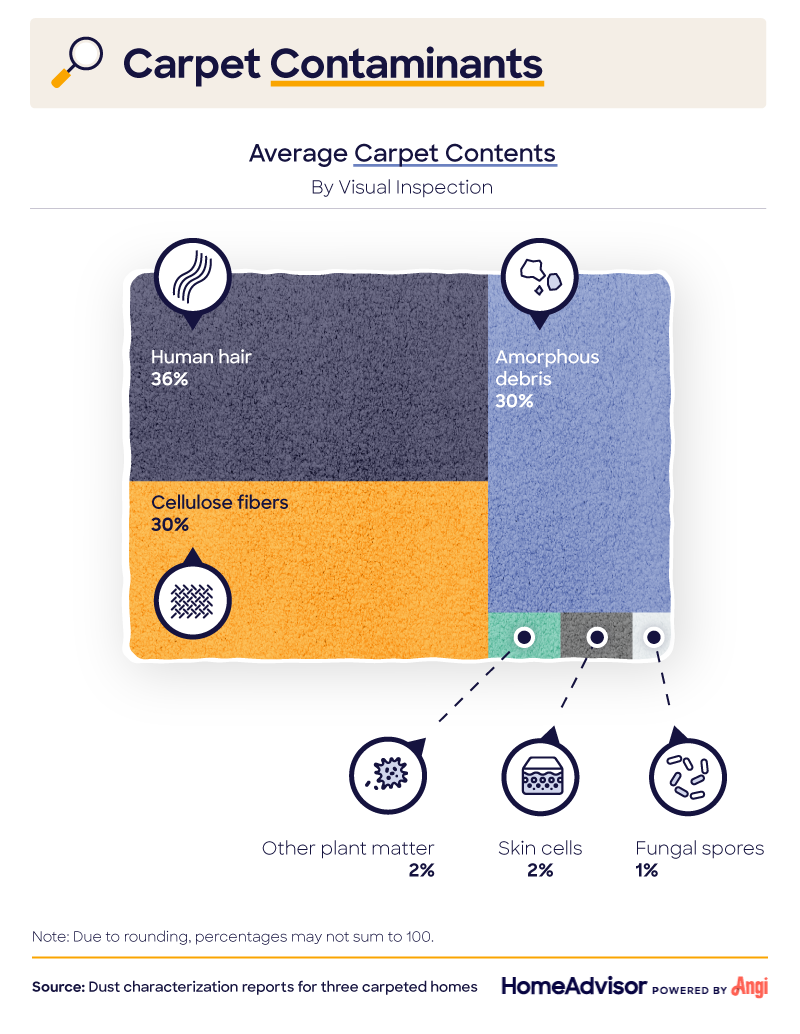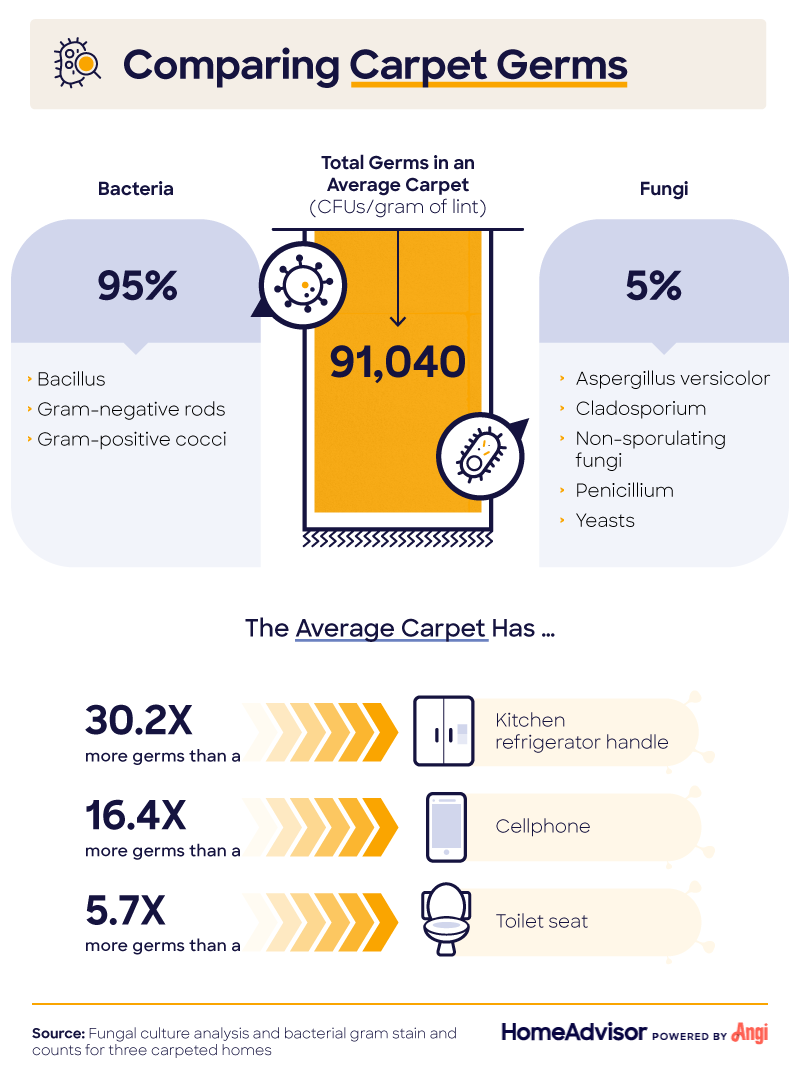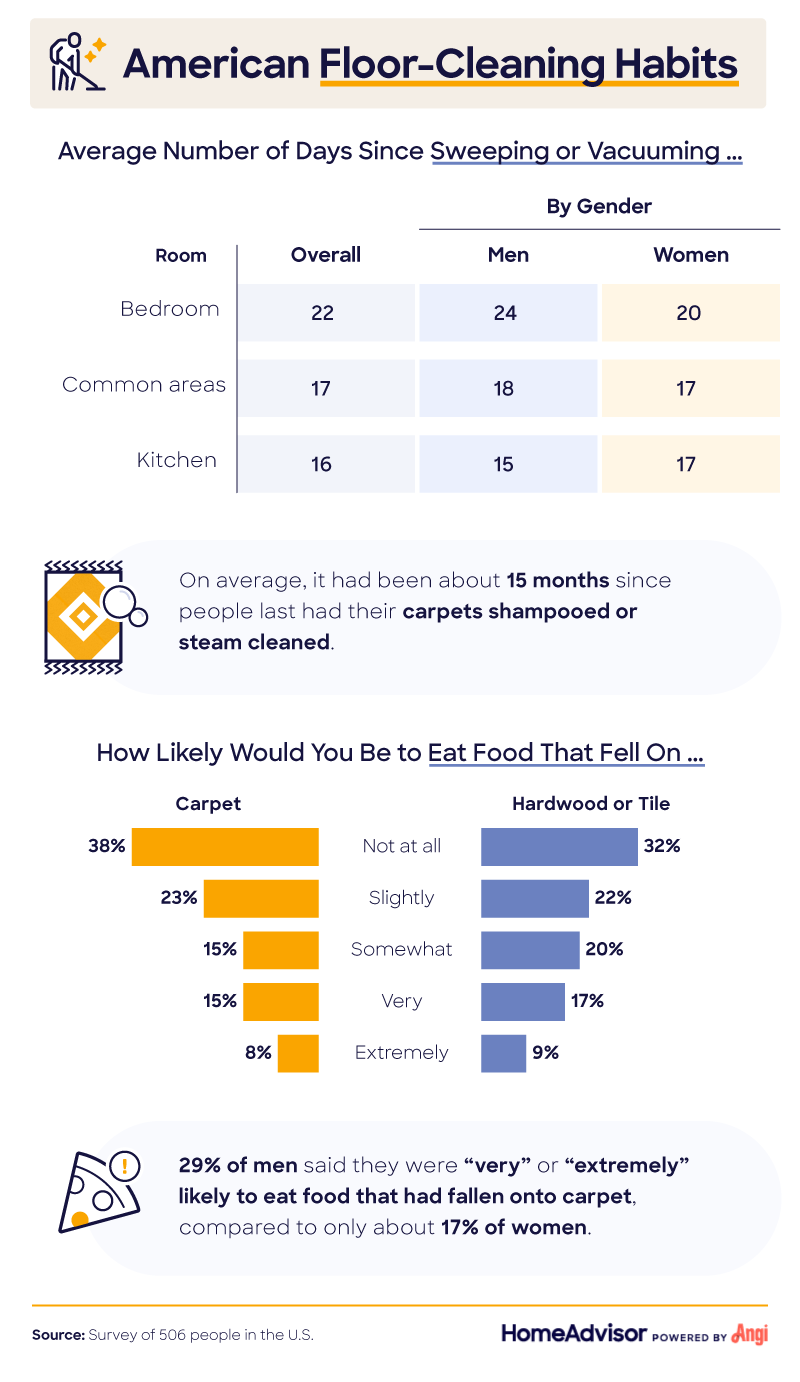
When choosing between flooring options in your home, personal taste matters. Some prefer the cozy, warm look and feel of carpets, while others prefer a sleek laminate or hardwood finish. Personal preference aside, however, hardwood or tile floors offer one key benefit over carpet: They are much easier to clean.
And while you might think keeping your carpets clean is as simple as vacuuming and the occasional shampooing or steaming—think again. Not only does the American Lung Association not recommend carpet as the primary flooring in your home, it says any carpet you do have should be vacuumed three times a week with a HEPA filter to truly be safe.
So why all the fuss? Are carpets just on a downward slope of popularity, or are they genuinely as gross as some might claim? To find out, we analyzed the carpets in three different homes to see exactly what’s lying beneath the surface. Read on as we break down what kinds of particles and germs are likely living in your carpet.
Key Findings
- Even in regularly cleaned floors, skin cells and fungal spores can build up enough to be visible in vacuumed dust samples
- The germy content of carpets can vary widely, but our samples contained more than thirty times as many germs as a refrigerator door handle and more than sixteen times as many germs as a cellphone
- About one in four people said they’d eat food that fell on the floor with little to no hesitation, regardless of whether the floor was carpeted
What’s Hiding in Your Carpet?

Without cheating, imagine the carpet or a rug in your home. What exactly do you think lurks between the fibers, possibly unseen to the human eye? Pet dander? Dirt tracked in from outside? Particles of food that may have hit the ground at one point? According to our analysis, there are three things you’ll likely find hidden within any carpet, no matter how clean it may appear:
- Human hair (comprising 36% of samples)
- Cellulose fibers (30%)
- Amorphous debris (30%)
Human hair is easy enough to decode (albeit a bit gross). Cellulose fibers are naturally occurring and commonly found in cotton as well as leaves and vegetables. Amorphous solids are particles without an ordered internal structure, including glass, rubber, and plastic.
While less common, carpet samples also turned out to contain roughly 2% human skin cells, which should be another consideration before laying down on your carpet or following the five-second rule for dropped food.
Under a Microscope

Now that you know what’s actually in your carpet, it’s probably not surprising to find that there are also germs you’ll need to take into consideration. But just how many germs are there, and are they dangerous?
The average carpet had over 91,000 CFUs (or colony-forming units) of germs per gram of dust, according to our analysis, consisting of 95% bacteria, including bacillus, gram-negative rods and gram-positive cocci. Here’s a quick breakdown of each:
- Bacillus: Linked to a variety of infections, including food poisoning
- Gram-negative rods: Fungus that can grow anywhere on the body, including under fingernails. Most commonly associated with skin infections.
- Gram-positive cocci: Commonly linked to skin infections and illnesses, such as pneumonia and blood poisoning
For additional context, that means the average carpet has over 30 times more germs than a kitchen refrigerator handle, 16 times more germs than the average cellphone and nearly six times more germs than a toilet seat.
In Need of a Deep Clean?

Not only are carpets dirty, but the issue may be compounded if you aren’t cleaning them regularly. According to the American Lung Association, every three days should be the standard, but how often are homeowners really heeding that recommendation?
On average, those surveyed reported going 22 days without sweeping or vacuuming their bedroom floors, followed by 17 days in common areas and 16 days in the kitchen.
Men reported not having cleaned the floors in their bedroom in the last 24 days, on average, compared to 20 days for women. It had been 15 months, on average, since respondents indicated having their carpets shampooed or steam cleaned.
Given all of this, now imagine eating food that may have fallen onto the carpet, regardless of how fast you picked it back up. That’s exactly what 29% of men and 17% of women told us they were very or extremely likely to do. Just 38% of respondents said they would never eat food that had fallen onto the carpet.
Keeping Your Floors Clean
Ditching carpet in favor of wood flooring has become a popular home renovation strategy, a decision that may offer both form and function. Peer-reviewed studies are largely in agreement that, when compared to carpets, hard flooring presents fewer problems related to perceived air quality, adverse health effects, and re-suspension of pollutants. As we found, carpets can be downright filthy, hiding more germs and bacteria than the average toilet seat, and most people aren’t cleaning them nearly as often as they should.
Methodology and Limitations
For the dust characterization reports, bacterial gram stain and counts, and fungal media culture, dust samples were taken from carpets in three homes, each in a different area of the home. One sample came from a master bedroom’s entryway, another from the floor near a dresser, and the third from a large rug in the living room. For each sample, roughly 7 square feet of carpet was vacuumed. Data for comparison to common household surfaces were retrieved from the 2011 NSF International Household Germ Study, and for comparison of our results to those of the 2011 NSF study, results were converted to CFUs/10 sq. cm.
For the survey portion of the study, data were gathered from 506 U.S. residents ranging in age from 18 to 78 with a median age of 36. Fifty-five percent of respondents were men, 44% were women, and 1% were nonbinary or not gender-conforming. Forty-four percent of respondents lived in homes with mostly hard floors, 26% had mostly carpet, and 30% had a roughly even mix of the two.
Fair Use Statement
Think your readers might be grossed out about what’s living in their carpets? Share these findings for any noncommercial use with the inclusion of a link back to this page so they have full access to our methodology and results.
 Five Home Projects to Address Immediately After Your House Has Flooded
Five Home Projects to Address Immediately After Your House Has Flooded  Why So Many Millennial Homeowners Are Remodeling Their Basements
Why So Many Millennial Homeowners Are Remodeling Their Basements  Famous Architectural Structures, Buildings, and Designs Throughout the World
Famous Architectural Structures, Buildings, and Designs Throughout the World  Home Sales Decline Amid High Prices and Low Supply
Home Sales Decline Amid High Prices and Low Supply  How to Create the Ultimate Playroom for a Child with Autism
How to Create the Ultimate Playroom for a Child with Autism 

Are You Familiar With This Topic? Share Your Experience.